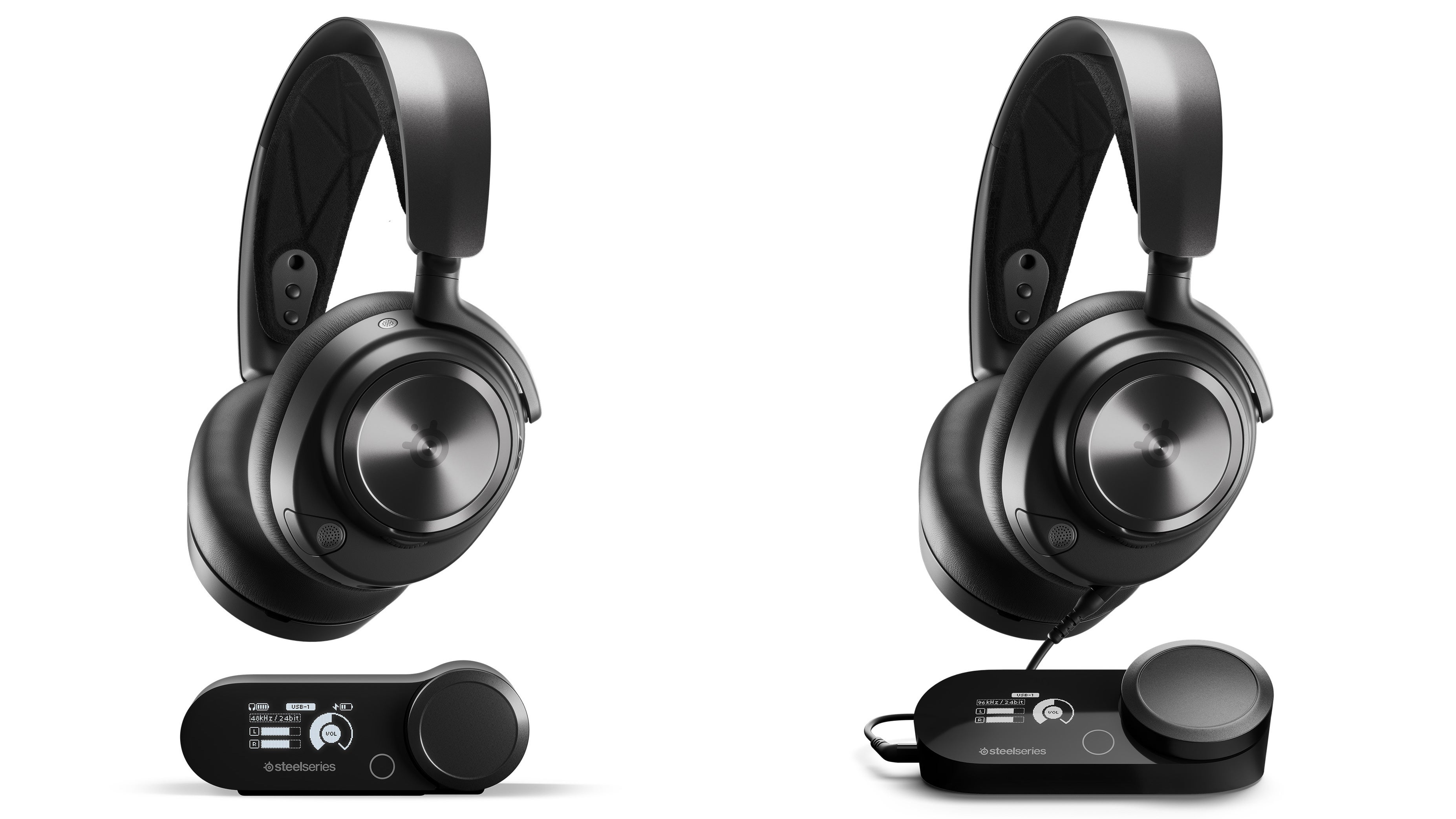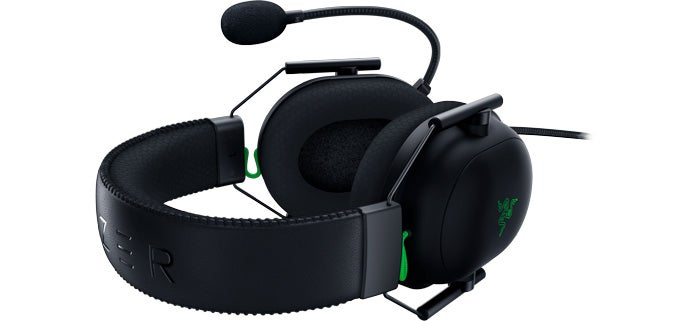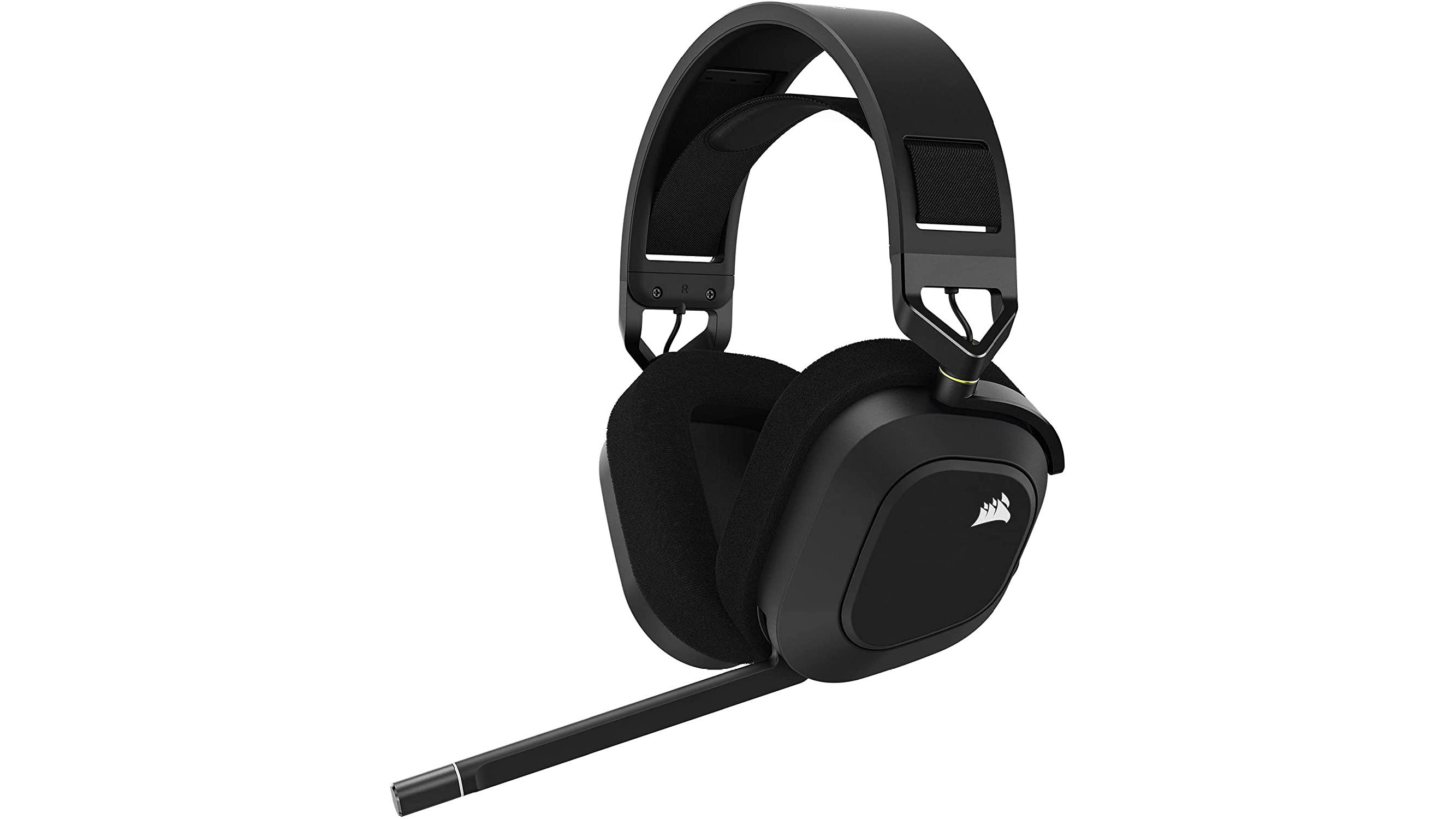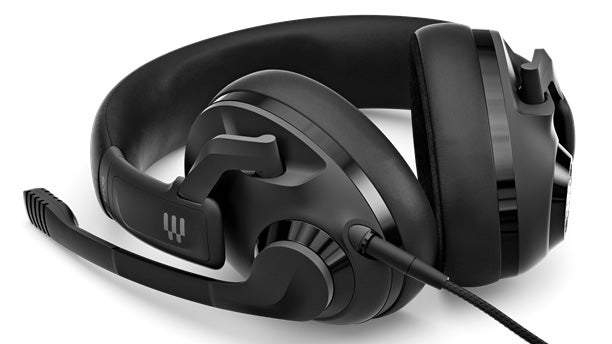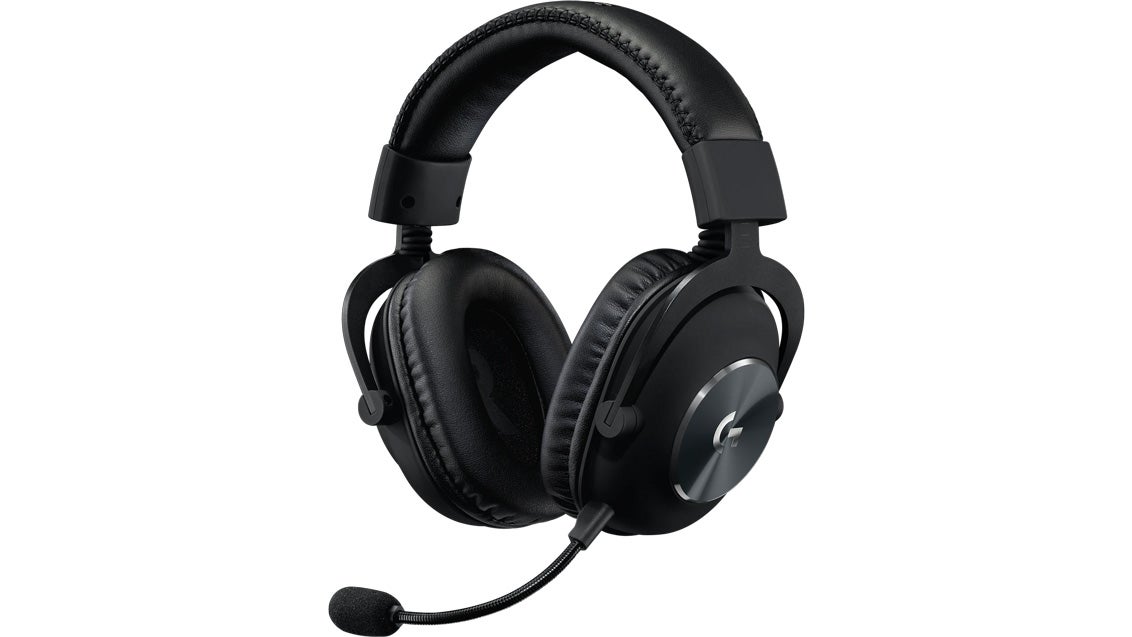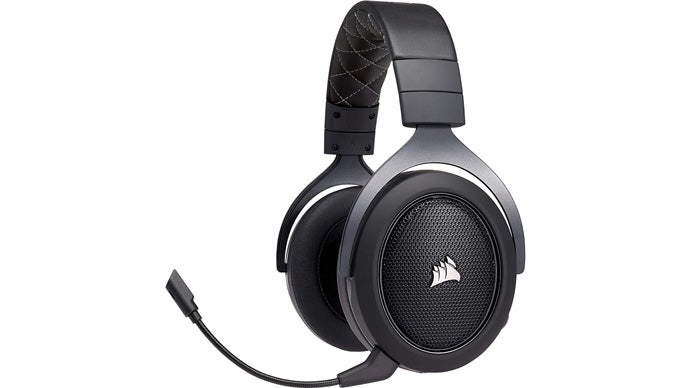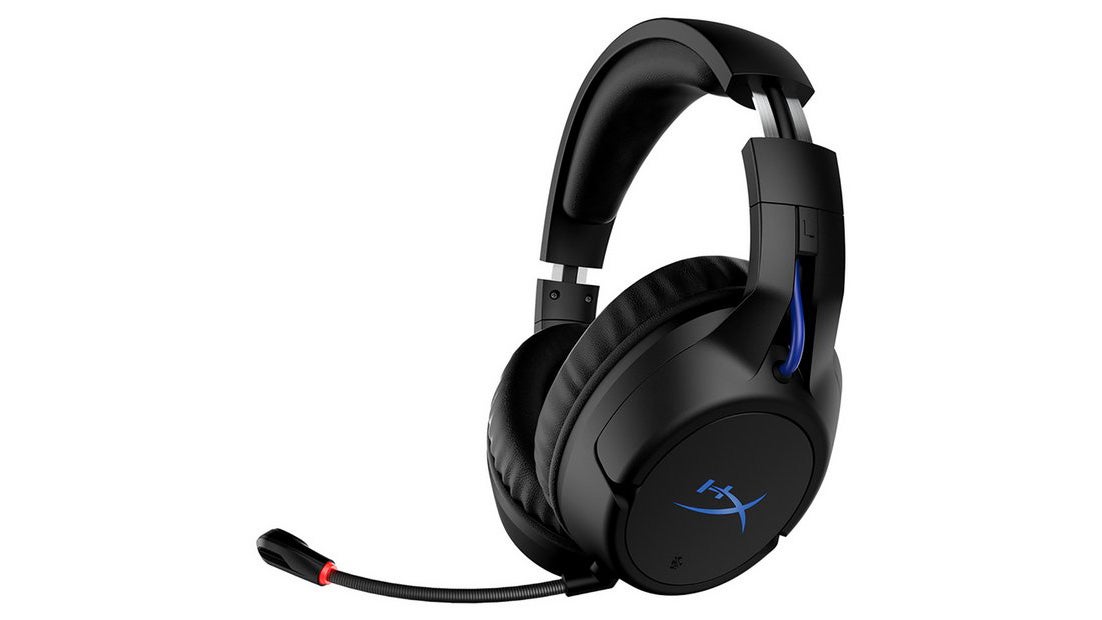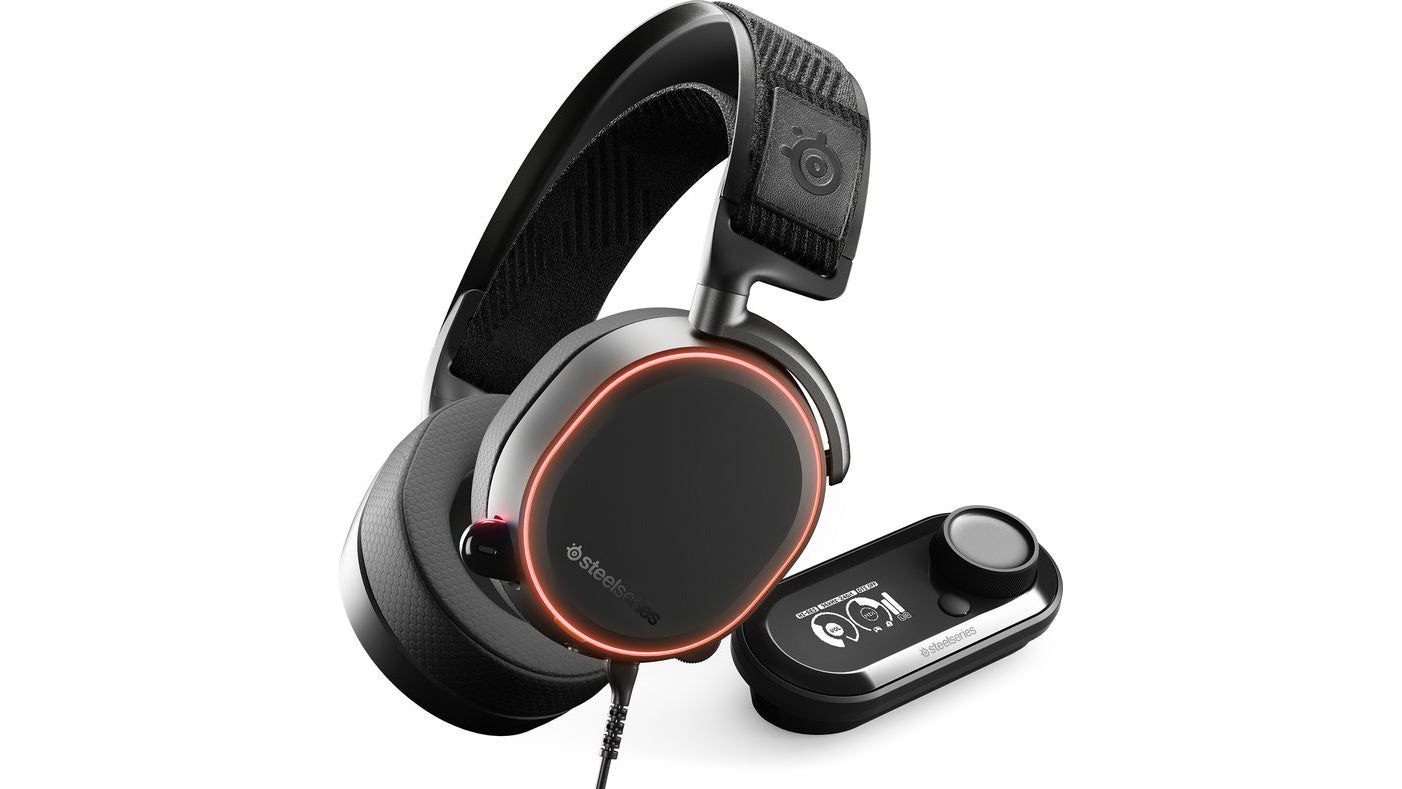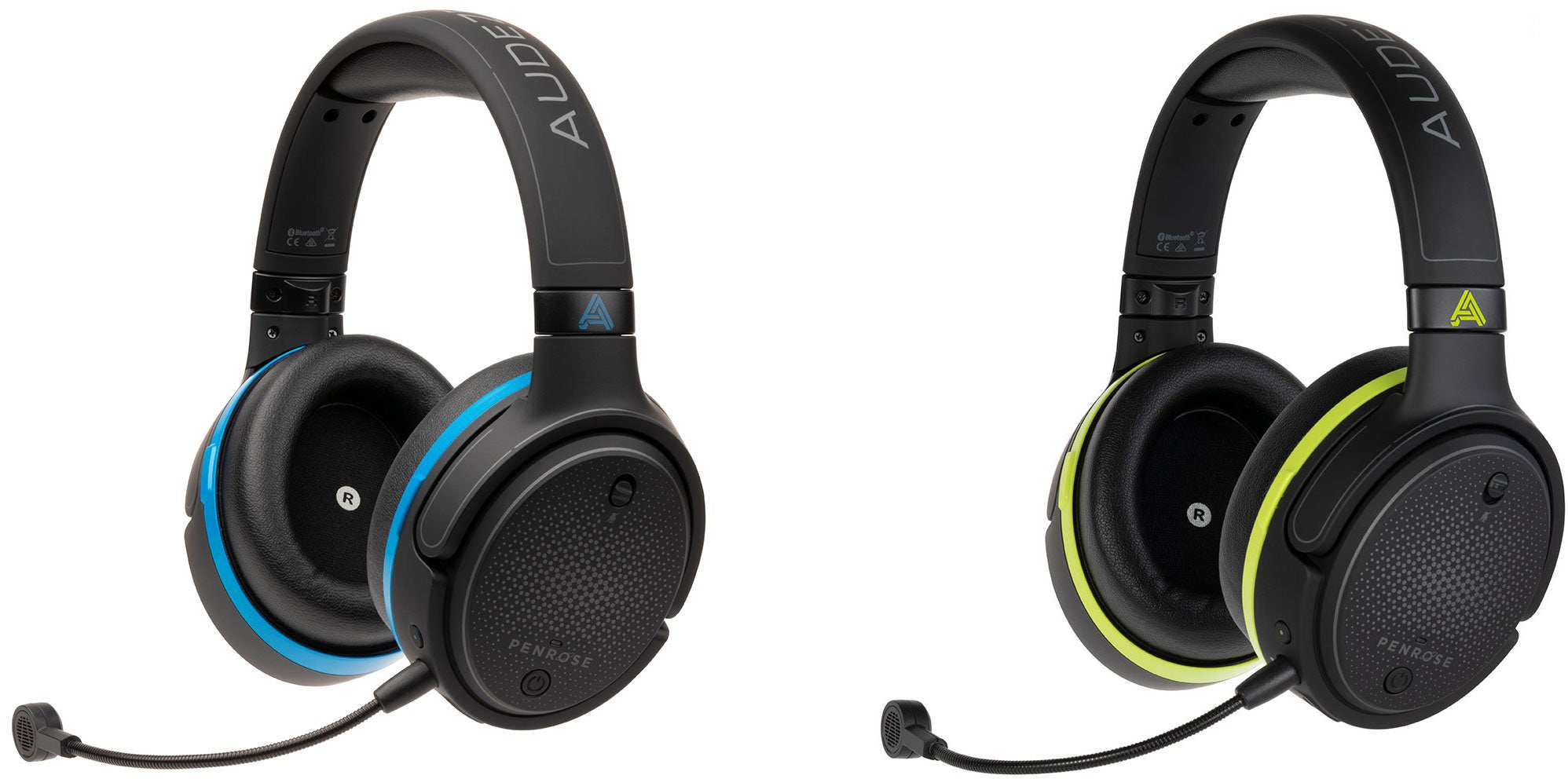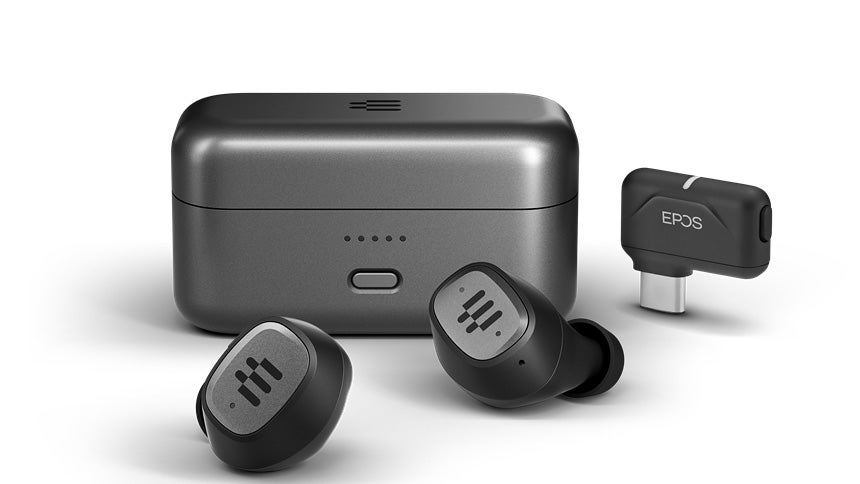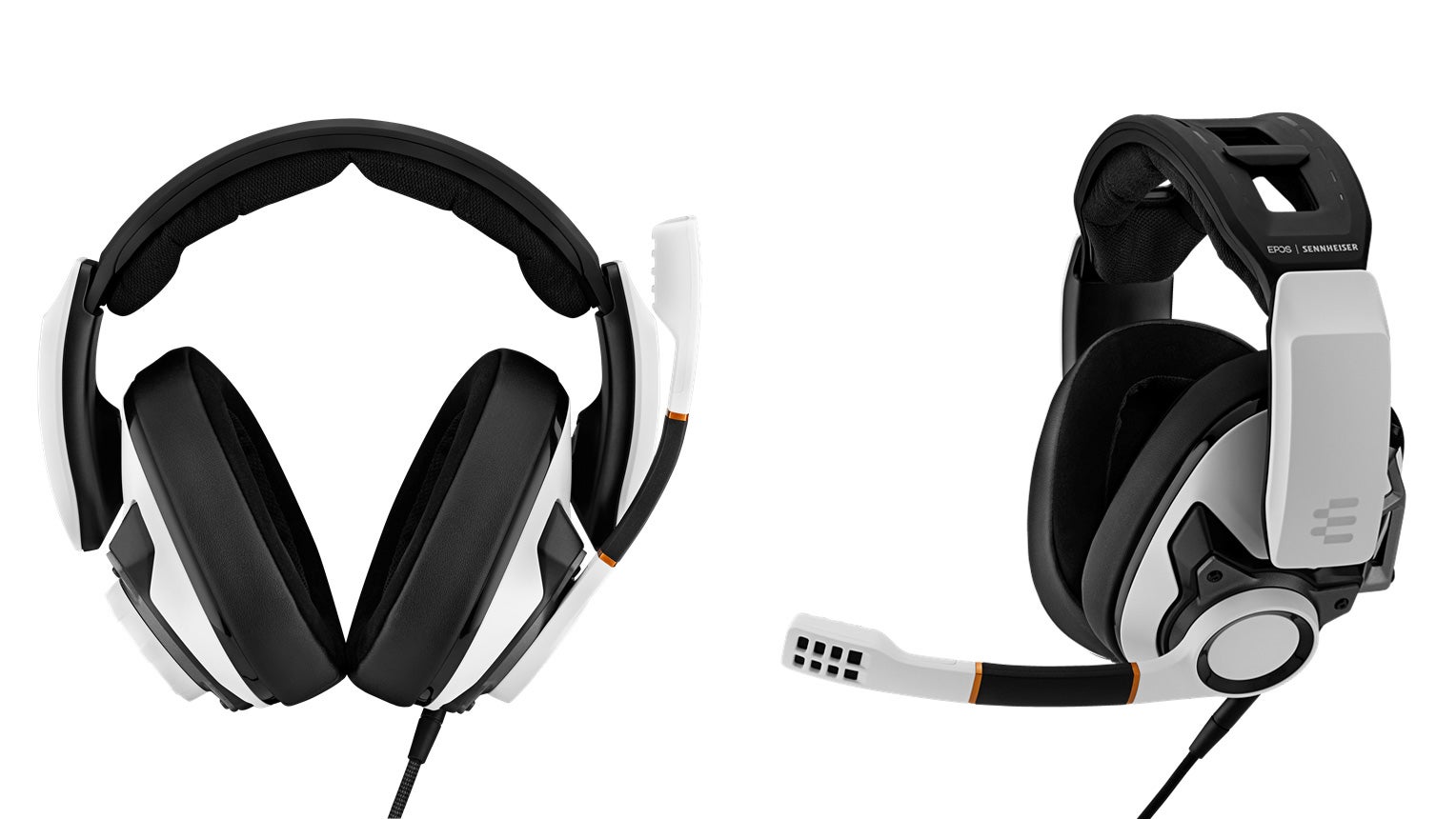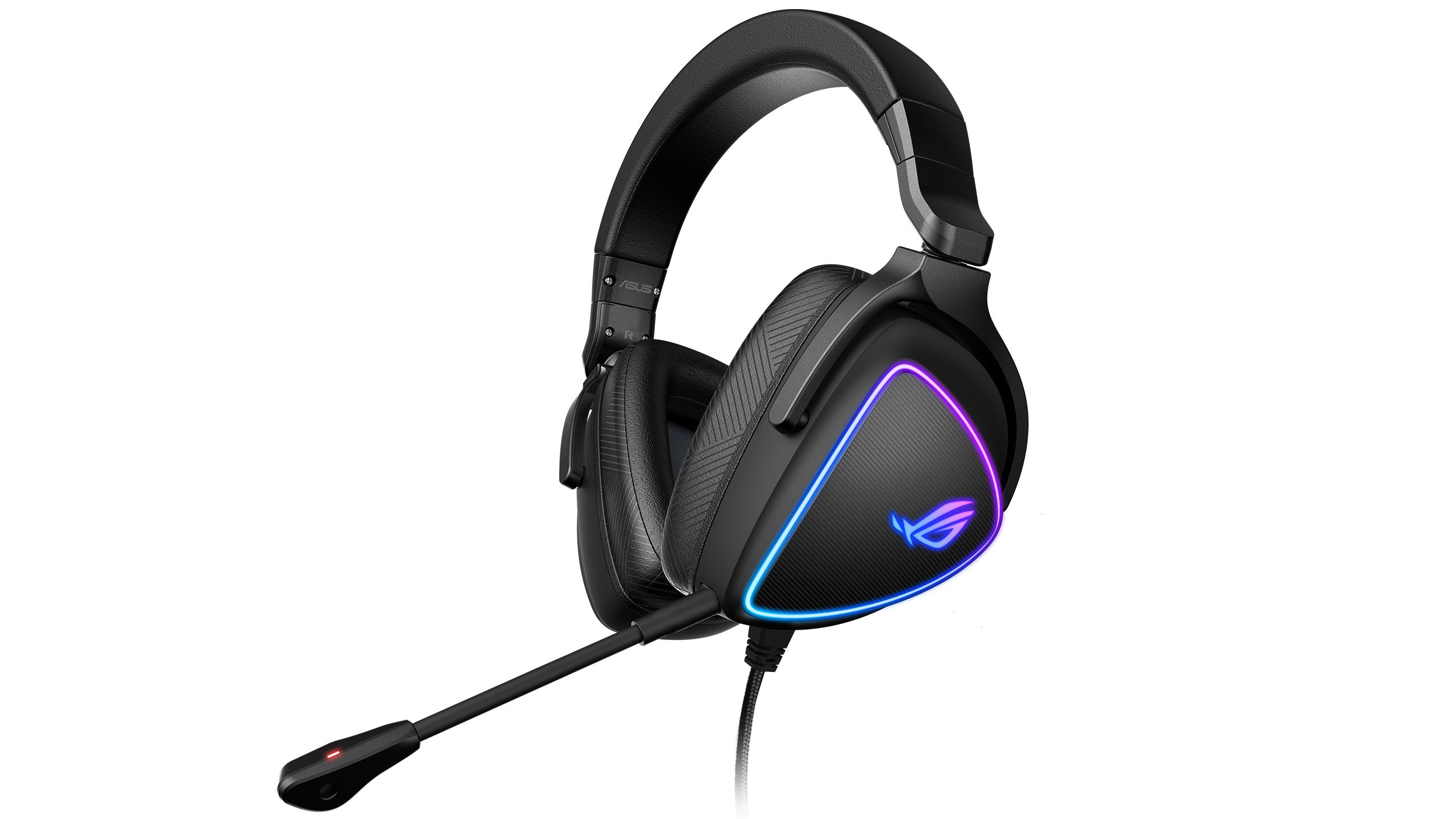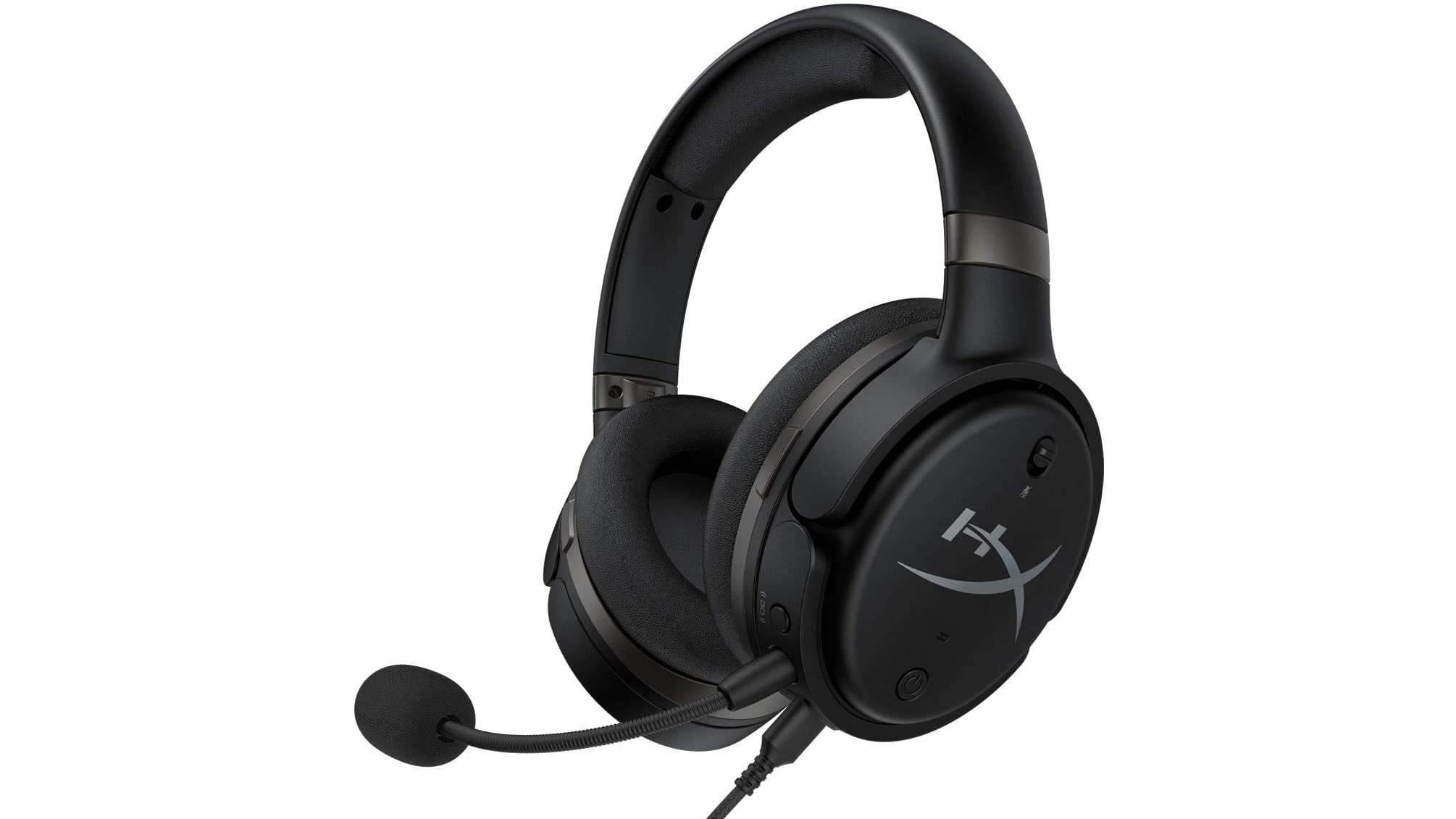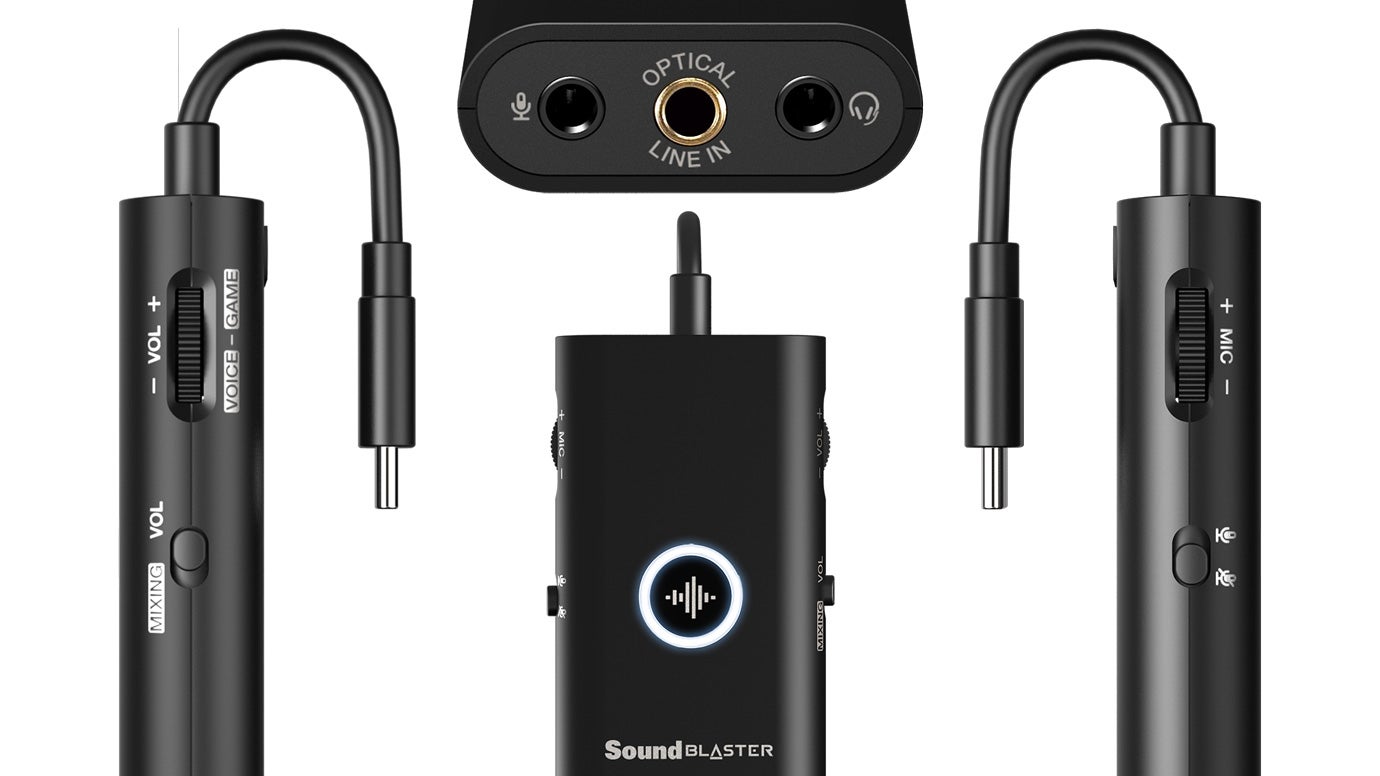Whether you prefer the lower cost and audio fidelity of wired headphones or the convenience of wireless headsets, we’ve got you covered. We’ve also included recommendations for the PS5, Xbox Series X/S, Switch and PC, so no matter what system you game on, you’ll be able to find at least a couple of top-tier gaming headsets to consider, each far better than your TV or monitor’s built-in speakers. We’ll also consider both open-back and closed-back headphones, as the former tend to offer a wider sound stage that’s conducive to locating enemies, while the latter minimise sound leakage to ensure you don’t bother your flatmates. Before we get into the recommendations, it’s worth mentioning what we’ll be looking for when choosing the best gaming headsets. We want a comfortable pair of headphones you can wear for hours without discomfort, perfect for marathon gaming sessions. Sound quality is also key, so that you can hear each sound clearly and become totally immersed in the game. Naturally, you’ll need to communicate with your friends or teammates too, so a built-in mic with good noise mitigation is also important. Finally, we also would like to see support for multiple systems, so that if you own a console and a PC, or multiple consoles, you can use the same headset on both. With that out of the way, let’s get straight into the Digital Foundry picks for the best gaming headphones available in 2022. Click the links to jump straight to the pick you’re interested in, or scroll on to read the whole piece! You can also find answers to frequently asked questions at the end of the page.
SteelSeries Arctis Nova Pro Wireless - best wireless gaming headset Razer Blackshark V2 / V2X - best wired gaming headset Corsair HS80 RGB Wireless - runner-up, best wireless gaming headset Epos H3 Hybrid - runner-up, best wired gaming headset Xbox Wireless Headset - best Xbox Series X/S headset Logitech G Pro X Wireless - best PS5 headset Corsair HS70 Bluetooth - best Switch headset Astro A10 Gen 2 - best value gaming headset Roccat Elo X Stereo - best cheap gaming headset HyperX Cloud Flight - best cheap wireless gaming headset SteelSeries Arctis Pro - best premium wired gaming headset Audeze Penrose - best premium wireless gaming headset Astro A40 TR with MixAmp Pro - best open-back gaming headset Epos GTW 270 Hybrid - best in-ear gaming headphones Nuraphone + Gaming Microphone - best noise cancelling gaming headset Sennheiser GSP 600 - best tough gaming headset Creative SXFI Gamer - best surround sound on a gaming headset Asus ROG Delta S - best hi-res gaming headset HyperX Cloud Orbit S - best planar magnetic headset Bonus: Sound Blaster G3 - best DAC for PS4 and Switch
Each model comes with a base station with two USB inputs, allowing you to connect to a console and PC, or two consoles, then swap quickly between the two sources. On Xbox versions of the ANP and ANPW, one port supports the Xbox but the headsets are otherwise identical. The base stations also serve as a DAC (for the wired version) and a wireless transmitter / spare battery charger (for the wireless version), with a screen, dial and button used to show sound and battery levels, select and modify EQ settings and so on.
The fabric suspension headband that debuted on the original Arctis headsets returns to provide a comfortable fit, but a new frame design and three headband positions allows the headsets to suit a wider range of head sizes. The athletic foam has been swapped for leatherette to boost bass response and improve passive noise isolation, which together with a higher clamping force ensures the headset remains in position. This clamping force is a bit much out of the box, but soon becomes comfortable even for long gaming sessions.
Earcup controls take a step backwards, with no dedicated dial for game/chat mix, but the volume wheel can be pressed in to toggle it between regular volume mode and game/chat mix mode. This is reflected on the base station, so it’s easy once you know how to do it. Interestingly, the wireless model has a separate multi-function button for the Bluetooth, so you can turn on the 2.4GHz and Bluetooth sides of the headset independently. It also comes with two batteries, so you can use one while the other is charging in the base station - very smart. ANC is a smart addition, but doesn’t quite match dedicated ANC headsets Bose’s QuietComfort or Sony’s WH-1000XM lines.
In terms of sound, the Arctis Nova Pro stands out. Bass, treble and mids are all well-represented, with extremely good detail and a wide sound stage for a closed back headset. The wired model sounds even better, thanks to a high-end Sabre DAC built into the base station. Microphone performance is also great when SteelSeries’ AI noise cancelling feature is used on PC, but merely average otherwise.
These are definitely high-end headsets, but if you can make use of the features - dual inputs, great base stations and wide compatibility - then the Arctis Nova Pro and Nova Pro Wireless are well worth it.
You can read the full Arctis Nova Pro and Nova Pro Wireless review here.
The BlackShark V2’s design is also worthy of some praise. For starters, the ears are well sealed to block out distracting background sounds - useful whether you’re clutching in Valorant or trying to get some work done while working from home with your spouse. The athletic-knit-covered memory foam ear pads remained comfortable for hours, no doubt aided by the light weight of the headset - just 262 grams. There’s a convenient volume knob on the left earcup, and the microphone is removable. The BlackShark V2 also lacks any kind of RGB lighting, with only green cables and a subtle Razer logo on each earcup betraying this design’s gaming focus.
In terms of connectivity, three options are provided: dual 3.5mm (for PCs), single 3.5mm (for PC, mobile, Switch, PS5 and Xbox) and USB-A (for PS5 and PC). That means you can use these headphones on the go just as easily as at home on your PC or console. USB comes via an included dongle which adds the simulated 7.1 capabilities, microphone settings (like a noise gate and side tone) and compatibility with Razer’s Synapse software. If you could do without all that, consider instead the BlackShark V2 X, which ditches the sound card to hit a much more competitive price point. (There’s also the BlackShark V2 Pro, which adds wireless connectivity with the same excellent sound and comfort, making it a good alternative to the SteelSeries Arctis 7X and 7P in the “best wireless headset” slot.)
Beyond its physical attributes, the Arctis series is defined by its usability, and the HS80 performs well here too. The volume dial and power button on the left earcup are easy to find, although there’s no game/chat mix dial on the right earcup as we see on most Arctis sets, and the software solution in place works well and even replaces the usual beeps for specific voiced prompts. Battery life is reasonable at around 18 hours, once the RGB lighting is disabled at least, and recharging is handled (over several hours, it must be said) via USB-C. You can use the headset wired while it’s charging at least, so your gameplay sessions won’t be interrupted if you forget to top up the battery after a few days - and this also unlocks high-res audio up to 24-bit 96kHz if you’re into that. Wireless range is good, but not great - I could maintain a connection in the rooms directly above or below my office, but couldn’t walk to the opposite side of the house without getting drop-outs. Thankfully, the headset reconnects swiftly.
Finally, audio quality. The HS80 has a pleasant, neutral response, with the only major criticism being slightly under-developed bass that makes some genres or cinematic moments feel a little lacking. This can be adjusted in the iCUE software on PC, but I was happy enough with the headset on its default setting. The HS80 does get nice and loud, and imaging feels fine to me - I had no issues listening for enemy footprints while finishing off my Dark Matter grind in Call of Duty: Black Ops Cold War. On PS5, you can use the console’s 3D audio (as with any other USB or 3.5mm headset), while on PC you get a free license for Dolby Atmos while the headset is attached. I don’t personally love surround sound for competitive gaming, but for watching films or playing single-player games it works beautifully.
All in all, the HS80 RGB Wireless is a great redesign effort from Corsair and in my mind outperforms their previous efforts at a similar price point and below. While it’s relatively expensive now, by Black Friday it could be an awesome pick-up around the £120/$100 mark - and even at its full £140/$150 RRP, its comfort, usability and flexibility make it a fine choice for PC, PS4 or PS5.
The industrial design here is great too, proving light and comfortable even while wearing glasses, and despite a more plasticky construction the H3 headsets still feel robust in the hand. The earcup volume dial on the H3 Hybrid has also been improved from the earlier models of the standard H3, which was a bit hard to turn with one finger - this model spins freely. I like the magnetically attached (and therefore easily removable) microphone arm too, which is great if you’re playing on PC with an external USB or XLR mic and would prefer a lighter headset.
The Epos H3 Hybrid and Epos H3 are excellent translations of the firm’s traditional strengths - audio quality, build quality and comfort - down to a more mainstream price point, and for that they deserve our runner-up spot. The standard H3 is a much better value currently, but we expect the recently released Hybrid to become more affordable going forward.
This is by far the cheapest headset to pack in this feature, yet the Xbox Wireless Headset doesn’t lack in the fundamentals either, with great (if bass-heavy) sound, good adjustability (with custom EQ settings) and a choice of three surround sound modes (including a free Dolby Atmos trial). See our Xbox Wireless Headset review to learn more, but we’re confident that the Xbox Wireless Headset is by far the best value wireless headset for Xbox on the market.
Another great headset that combines dongle-free Xbox Wireless with Bluetooth is the SteelSeries Arctis 9X, which boast neutral audio reproduction, a comfortable “ski-goggle” headband and battery life of around 20 hours. Mic quality is strong too, with a retractable design that’s easy to position. Convenient volume, game/chat balance and connectivity controls ensure this headset isn’t frustrating to use, either.
Another option is the Corsair HS75 XB. I loved using this headset with games like Tetris Effect and Call of Duty Warzone, where the bass-heavy profile and Dolby Atmos surround sound made for a bombastic experience. The included mic is also impressive, producing clear speech for easy comms in multiplayer and co-op games. Given its comfortable fit, great sound and long feature list, the HS75 XB is an excellent pick.
Wireless headphones tend to suffer in mic quality, but the solid hardware here plus the addition of Blue Voice software on PC make this one of the best-sounding options in the category. Battery life is reasonable, at around 20 hours, with easy (if not rapid) USB-C recharging. One area I’d like to particularly highlight is usability; Logitech has done well to incorporate a large number of controls (power, volume, mic mute) onto a single earcup while ensuring each has a distinct feel. Overall, the G Pro X is a great pick for any competitively-minded PS5 or PC gamers.
In terms of alternatives, the Victrix Gambit is a good wireless plus wired headset that’s often available at a discount. Sound quality is on point with a bass-heavy mix that suits experiental games rather than competitive ones, usability is good with comfortably reachable controls and comfort is excellent with a good range of adjustability. However, mic quality and overall build quality does falter a bit compared to the G Pro X, and you may well prefer a more neutral sound as well.
Another option with 2.4GHz wireless and BT support is the Turtle Beach Stealth 700 G2. It offers a tight fit with strong passive isolation, making it a great choice for gaming in noisy environments. The headset is extremely well built, despite its plastic construction, and offers plenty of on-ear controls. Unfortunately, the chat mix and volume wheels are right next to each other, making it easy to operate the wrong one, and the voice alerts are painfully loud no matter the headset’s volume setting. Sound quality is good, perhaps a little behind the G Pro X, and the mic is on par as well, so if the Stealth 700 G2 is cheaper or if passive noise cancellation is important, it could be a good fit for gamers on PlayStation and PC.
We found the HS70 comfortable in our testing, despite toasty ears after each gaming session, with rationally-designed controls and convenient USB-C charging. Audio quality is a little better than the Arctis 1 Wireless we previously had as our top Switch pick, with a V-shaped frequency response that emphasises bass and treble at the expense of mids; mic quality is also good, especially when used over a wired connection.
As an alternative, the Arctis 1 Wireless for Xbox ($100/£100) offers full wireless connectivity for Switch, as well as Xbox Series X/S and PS5. That makes it a great option if you’re looking for a lighter headset and don’t need Bluetooth support for voice chat.
In terms of features, there’s a decent-sounding flip-to-mute microphone and an inline volume control on the simple black plastic 3.5mm cable; a 3.5mm splitter adapter is provided for PCs. There’s no built-in surround sound, as you’d expect from a 3.5mm headset, but you can use surround sound solutions from Sony and Microsoft on PS5, Xbox consoles and PC. Astro has also taken strides with repairability, with replaceable ear pads, headband pads and cables which is nice to see.
The Astro A10 Gen 2 is an impressive entry-level headset, and with the prospect of eventual sales and price drops these headsets could become even better value.
The same comfortable design is also available with the Elo 7.1 Surround, a USB gaming headset, and the Elo X Air, a wireless headset. Both of the latter work via USB, restricting their use to PC, PS4, PS5 and Switch, but allowing for RGB lighting and 7.1 surround sound. They’re a good choice at their price points if you can use the extra features, although the cheapest Stereo option remains our top pick.
The light weight (300 grams), memory foam ear cups and only moderate clamping strength means that these headsets feel comfortable to wear for long periods, and the plastic construction feels relatively sturdy in the hand with metal sliders for added durability. Rotating ear cups are handy if you fancy letting your ears rest for a while, but you still want to be able to hear the broad strokes of your game. What’s not so handy is the Micro USB charging, which has been retained even on the new PS5-branded model and is a bit annoying in 2022 where almost everything is USB-C. You’ll also need to press the power button twice after turning it on to disable the lighting - I wish the headset would just remember this setting as the lighting adds nothing to the experience but harms battery life significantly.
Overall: a comfy headset with good audio characteristics for gaming and long battery life, but a few quirks that could be improved in future models.
The Arctis Pro is also incredibly comfortable, with the same fabric suspension headband that shines on the rest of the Arctis range. The headset has a well-regarded extendable microphone too, with the option for the mic to light up when it’s muted so you don’t end up talking to yourself. If you don’t need wireless connectivity and you can afford the premium price, the Arctis Pro + GameDAC is the best gaming headset we’ve ever tested.
I found the Penrose quite uncomfortable initially, but after a week of use its high clamping force eased up, and it now ranks among the most comfortable options I’ve tried despite its weight. Audeze tells me that the headset uses a common earcup size, so it’s possible that replacement cushions from different materials could be sold down the line if there’s enough interest (I’d be down for a set of velour ear pads that let out more bass but are comfier with spectacles, for example).
Battery life is average, at around 15 hours, with USB-C charging taking a few hours; you get an audible low battery warning when you have an hour or less left.
The Penrose does come with its quirks - I experienced a quiet hissing in the left earcup at low volume levels, which required turning off side-tone in the Windows app to solve. The headset also annoyingly disappears from your list of sound devices in Windows when the headset shuts off to save power, which means sound can start blasting out of your speakers unexpectedly. You can change the shutoff time in the Audeze HQ app to work around this if it bothers you.
Despite the annoyances, these weren’t game breakers for me, and Audeze’s status as a small company means that it should be able to fix these sorts of issues quickly. Overall, the Penrose’s excellent audio and wide cross-compatibility means it’s still easy to recommend.
If you’re willing to accept a bulkier headset in exchange for better battery life, the Sennheiser GSP 370 is uniquely capable option. It boasts a sturdy design, good sound reproduction and up to 100 hours of battery life. We found its sound signature to be warm and inviting, with reasonable imaging and a wider sound stage than you could might expect for a closed-back headphone, and the mic is one of the better ones we’ve tested. The GSP 370 is a little heavy at 285 grams, yet it is well balanced and comfortable to wear for long periods. Connectivity is handled via a 2.4GHz USB dongle, limiting connectivity to PC, PlayStation and Switch (while docked), with no option for Bluetooth or 3.5mm inputs.
If comfort is more important than battery life, then the HyperX Cloud 2 Wireless ($150/£150) is a worthy alternative. Just like the legendary wired version loved by esports pros and casual gamers alike, the Cloud 2 Wireless are supremely comfortable, well built and sound great with a neutral profile and good imaging. Battery life is still respectable too, at 30 hours, with quick USB-C charging available.
If money is no object, there are a host of other strong options near the £300/$300 price point too. Here are three examples that we’ve tested and rate highly, although the Audeze Penrose, GSP 370 and Cloud 2 Wireless offer better value in our book:
Epos Sennheiser GSP 670: better sound but worse battery life vs GSP 370 (£279/$300) SteelSeries Arctis Pro Wireless: comfy with nifty dual-battery charging (£320/$330) Astro A50: great sound, comfortable and available in Xbox or PS5 variants (£300/$300)
How does it sound? The default tuning is warm with nice emphasis on low and low-mid tones, but the Astro Command Center software makes it easy to find a more neutral EQ setting. Imaging is pretty good, helping you locate enemies in-game, and there’s the option for both stereo and simulated 7.1 surround. As with all open-back headphones, some sound does leak out, and you’ll be able to hear background noise too, making them best suited for quiet environments. The microphone is also of good quality, and can moved to either side of the headset or removed entirely if you prefer. The headset is available standalone, but we recommend picking up the version with the bundled MixAmp. The MixAmp provides convenient dials for adjusting the volume and game/chat balance, compatibility with the Astro Command Center software, plus easy connections to PCs and either Xbox One or PS4 units depending on which variant you purchased. While they aren’t strictly gaming headsets, Sennheiser’s HD 598 and HD58X Jubilee are also great options. These open-back headphones boast neutral sound reproduction and a wide sound stage, with velour earcups and a lightweight design that stays comfortable for hours on end. These headphones don’t come with a built-in microphone, so we recommend pairing them with one of the best gaming microphones, like a clip-on ModMic or a freestanding unit like the Blue Yeti. I tested the headphones in competitive Counter-Strike matches, and found the link remained stable with no discernible delay compared to a wired headset. And while in-ear headphones never have a super-wide sound stage, the reasonable imaging here helps with locating enemies by the sound of their footsteps. Otherwise, the sound is impressive, as you’d hope from the Epos name, with surprisingly present bass, rich mids and crisp highs. You can play with an EPOS app on PC to adjust the equaliser and enable simulated surround sound if that’s your preference. In terms of isolation, the in-ear design means there’s little sound leakage in either direction, allowing you to concentrate on your game. There’s no active noise cancellation here, but it’s not really needed either. The isolation does require a good fit with the ear buds, with three different sizes provided in the box. I found the in-ears comfortable to wear for a few hours, but my ears did become a little sore afterwards. The in-ears will last for around five hours before needing a recharge in their metal case, which provides an additional 20 hours of battery life and recharges over USB-C. The GTW 270 will automatically turn off if the right earbud is removed from your ear, which helps to maintain battery life over the course of a day. Unfortunately, the GTW 270 has one major flaw for gaming - the dual microphones built into the earbuds don’t work over the USB-C connection due to a bandwidth connection, so you’ll need to either use a standalone gaming mic for communicating in team games or switch to higher latency Bluetooth. Otherwise, there’s a lot to like here - the GTW 270 is comfortable, long-lasting and sounds great, with a unique low latency option that makes these the best in-ears we’ve tested for gaming. Alternatively, consider the £99/$99 Edifier Neobuds Pro. These in-ears offer a low-latency (80ms) gaming mode over Bluetooth, no USB-C dongle required. The sound reproduction here is impressive, thanks to the combination of an armature for bass and a dynamic driver for mids/treble. Notably, these units offer active noise cancellation - including several strength levels and an ‘ambient’ mode to let in external noise when you’re listening out for a parcel delivery or carrying out a conversation - giving them a few extra tricks not matched by the GTW 270 Hybrid. Given that both headphones are available at a similar price in the UK (and the Neobuds Pro are much cheaper in the US), they’re well worth considering for gaming. The initial setup is quite involved - you’ll be asked to use the Android or iPhone app to develop a custom EQ based on the shape of your ears, then upgrade the headset’s firmware over a leisurely 20 minute period if an update is available. Following this, you can plug in the Gaming Microphone add-on and hook them up to your PC - a 3.5mm splitter isn’t provided, so you’ll need to purchase your own if your PC’s 3.5mm audio port doesn’t support combined mic/headphone connections. You’ll be welcomed by name, with a readout of the current battery life (required for ANC) and then the headphones will start working. Thankfully, the result of this long setup process is excellent audio with pinpoint imaging - plus significant bass response if you knock the in-app slider all the way. The in-ear portion of the headset is quite comfortable too, with the option of three tip sizes in the box, but they still may not suit everyone. This really is one of these things that you have to try for yourself, as I honestly didn’t expect the level of comfort and aural clarity that I got. If you’re willing to spend the significant asking price, you’ll be rewarded with both a top-notch noise cancelling Bluetooth headset for mobile use and the best noise-cancelling gaming headset we’ve tested. Of course, something that’s well-built but rubbish isn’t worth buying - but thankfully the GSP 600 is also a really good wired headset too. It offers incredible noise isolation, thanks to its thick ear cups and moderate clamping force, making it easy to lose yourself in a virtual world. The sound quality is good too, with an mild emphasis on bass that makes cinematic singleplayer games sound fantastic - although this does mean that more subtle highs and mids can be lost, making it less suitable for competitive multiplayer games like CSGO, Valorant or Warzone. The flip-down microphone works well enough, and the chunky volume wheel on the right ear cup makes it easy to adjust your sound in between firefights. Overall, it’s a strong option - befitting its premium price point. If you’d prefer a wireless headset, then the Corsair Virtuoso SE’s aluminium construction, USB-C charging and bright sound signature make it a strong choice. However, the Virtuoso SE’s high clamping force out of the box makes it slightly less comfortable than the GSP 600, consigning it to our back-up choice for this slot. Even with its special modes disabled, the SXFI Gamer still impresses. The headset is relatively comfortable to wear for long periods, with suitably cushy ear cups, and the clamping force here is just right. The microphone has a built-in pop filter, which works well, although the mic does feel much more sensitive to correct placement than others I’ve tried. The USB-C connection means that audio processing duties are handled internally, rather than relying on potential suspect motherboard audio, and also allows for tasteful RGB backlighting. Ergonomics are good, with well-differentiated buttons backed up with aural confirmation of which mode is enabled and a smooth volume wheel. The only major complaint I had concerned the cable, which produces a ton of noise when it’s handled or it rubs against the edge of your desk. Given that this looks to be a regular USB-C to USB-C cable, replacement could be an option if this bothers you too. Overall, the SXFI Gamer is a strong headset that delivers on its key promises without any major stumbles. If a good surround sound implementation is key for you, then the SXFI Gamer is definitely worth a go. If you have a higher budget, the ROG Theta 7.1 is another USB-C gaming headset that offers an even better surround sound implementation, thanks to four discrete ESS 9601 drivers - three 30mm drivers for the centre, rear and sides, respectively, and one 40mm driver for the front. This provides rich, full-bodied sound with plenty of warmth - ideal for listening to music or playing immersive single-player games. Convenient earcup volume controls, a performant “AI-powered” mic and RGB lighting are also included, ticking all the boxes for a high-end gaming headset. While the ROG Theta sounds great, the heavy weight of the headset makes it fatiguing for long gaming or listening sessions. The USB-C and USB-A connectivity allows easy use with the PC, PS4, Switch and Android smartphones, but the thick cables emerging from each side of the headset are hard to ignore. Despite these flaws and a relatively high asking price, the ROG Theta is an intriguing option. Another possibility for surround sound junkies is the JBL Quantum One. This headset has a number of novel features, including active noise cancellation and an HRTF surround sound mode that adapts to each user based on measurements taken by a special in-ear mic worn under the headset itself during setup. Unfortunately, this latter mode didn’t work well for me, with the initial setup process playing extremely loud noises into my ear, pausing and then repeating ad infinitum for about 10 minutes. Later, I pushed the earbud in even further and completed the setup successfully, but the results weren’t noticeably better than the default tuning. Despite this initial stumbling, the other surround sound modes performed better, and features like head tracking were quite fun to experience for the first time. The headset’s acoustics were solid as well, with good imaging, although the relatively high weight of the headset made it uncomfortable for spectacled-me over long gaming sessions. However, others who tested the same headset found the surround sound much more engaging and the fit more comfortable, so I think the Quantum One is still worth a try. You can adjust the mix with a graphical equaliser and several presets in the provided Armoury Crate software, which also allows you to choose RGB lighting effects (toggled between ‘on’, ‘off’ and ‘reactive’ via a simple hardware switch). The microphone gets access to Asus’ AI features for cancelling out unwanted background noise, and they work well - but you do lose a bit of detail and clarity with this turned on. The Armoury Crate app is only available on PC, but you can use the headset via its wired USB-C connection on Android, PS4 and PS5 too. Beyond the audio quality, this is one of the most comfortable headsets I’ve worn in years, with a lightweight (288g) design, D-shaped ear pads and the perfect amount of clamping force. Normally I can only wear headsets for a few hours before my ears become sore, and I accepted that as a normal part of PC gaming while wearing glasses, but here I didn’t face that problem. I still took off the headset, but more because my ears got a bit warm - and that’s much more quickly rectified! If you don’t like the feel of the default synthetic leather pads, there are fabric replacements in the box to try too. Apart from the sound, the Cloud Orbit S ticks all the relevant boxes. It’s comfortable to wear for a few hours at a time (and longer if you’re lucky enough to not wear glasses), thanks to its thick pads and balanced design, despite its weight. The microphone quality is in the upper echelon of headsets we’ve tested and the extremely long cable means you can stray from your computer without difficulty. There are still some oddities here - such as needing to manually turn on what is a wired headset and potentially reset your audio devices in apps like Discord - but by in large everything works as it should. The only sticking point is the price, but that’s practically a feature of planar magnetic devices. For the money, you do get something quite special - and if you’ll use the head tracking functionality, it might be worth choosing this over the wireless Audeze Penrose. Let’s take a look at what’s included. At the bottom of the device, there are three inputs for headphones, microphones and optical (via a short adapter cable), while on the other end is a USB-C plug that can be converted to full-size USB (with another included adapter). This setup covers you on the PS4, Switch and computers of all kinds, but while Xbox is supported via the optical input you won’t be able to use voice comms here. The left side of the device allows you to mute or adjust the volume of your mic, while the right side allows you adjust the volume of your headphones. There’s also a switch here; flip it and you’ll be able to adjust the mix between game and chat volume on PS4 or PC - so you can turn down your annoying teammates to focus on the game or vice versa. Finally, there’s a button at the top that enables another key feature, the built-in footstep amplifier mode, intended to give you an edge in competitive shooters. The whole package works well, with each setting you’d need within easy reach. It’s great to be able to adjust things like the chat mix or enable the footstep boosting equaliser setting without needing to dive into game menus - something that’s likely to get you killed in games like Call of Duty Warzone. The boost in audio quality is evident out of the box, and you also have the ability to customise your EQ (either by hand or by selecting per-game presets) using apps on Android, iOS or Windows. At around £55/$60, the Sound Blaster G3 is a significant investment. However, it is something that you can use with a wide range of consoles and computers, or even Android phones, and you’ll get some benefit out of it even for listening to music or playing non-competitive games. For that reason, if you want to take your audio quality seriously and you’re using wired headphones, the G3 is a sensible acquisition. For more external sound card recommendations, check out our picks for the best gaming sound cards. It depends. If you want to immerse yourself in a game or movie, the virtual surround sound mode offered on many gaming headsets can be fun to play with. You can even add surround sound processing to headphones that don’t come with it on PCs running Windows 10 and the Xbox One using Windows Sonic or Dolby Atmos for Headphones. However, if you’re looking at surround sound to gain a competitive advantage, my recommendation is to keep surround sound disabled - the processing that tries to fake surround sound often makes it harder to hear footsteps or other quiet audio cues, adds delay and tends to remove detail. Instead, look for headphones with a wider audio stage, eg many open-back headphones, as this will actually make it easier to place your enemies on the map based on the noises that they’re making. Should I get wireless headphones? Wireless headphones give you a lot of freedom, so you can make yourself a sandwich in the kitchen or sit on the opposite side of the couch without worrying about taking off your headset or rerouting its cables. However, you will need to recharge your wireless headset every few days or weeks, and it’s certainly annoying when your headphones go dead mid-firefight. If you tend to sit in different positions while gaming or just hate being tethered to your desk, wireless is a sensible choice; otherwise, save the money and the hassle of recharging and get wired headphones instead. What brands should I consider? This is no by no means an exhaustive list, but headphones from HyperX, SteelSeries and Sennheiser tend to be well-respected. Razer, Logitech, Turtle Beach and Astro have also made some great headsets in their day, although they’ve also produced a few relative stinkers as well. Ultimately though, gaming headsets can vary massively from model to model, so it’s best to look for reviews on the headset you’re considering rather than shopping by brand alone. Why do headsets that work for PS4, PS5 or PC not work for Xbox? Largely because PlayStation 4/5 and PC support connection options that the Xbox One does not. The PS4 and PC both support headsets that connect via 3.5mm (either dual 3-pole or 4-pole), optical, Bluetooth and USB. Meanwhile, the Xbox One didn’t include 3.5mm on its first-generation controllers, requiring the use of an Xbox One Stereo Headset Adapter to add this option. The Xbox also only works with certified USB devices and uses its own proprietary wireless standard rather than Bluetooth, so you’ll need to look for headsets that are specifically marketed as Xbox Series or Xbox One compatible. The final option is getting a headset that connects via optical (S/PDIF), although this isn’t available on the Xbox Series X or S. We’ve marked the connection options for each headset we recommended above for your information. How can I improve the sound of my existing headphones? Good and totally not just made up question! A lot of this comes down to personal preference, but we prefer to turn off audio “enhancements” like surround sound and aggressive equaliser settings; you want things to be as “bare metal” as possible if you trust in the intent of sound engineers and headphone designers alike. From there you can use a DAC, which takes audio processing duties off your PC or console and entrusts it instead to dedicated hardware which tends to do a better job, removing jitter and changing the characteristics of the sound for the better. Desktop or portable DACs like the Audioengine D1, Fiio E10K or Cambridge Audio DacMagic XS cost around £100/$100 or less and can improve audio quality substantially. (We also highlighted the Sound Blaster G3 just above!) Of course, you can spend way more if you want to go even further into the audiophile realm. What about speakers? We’ve added a round-up of the best computer speakers from £50 to £250 here.
